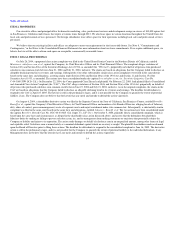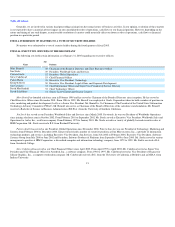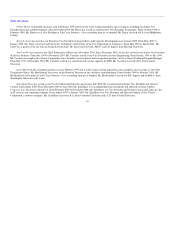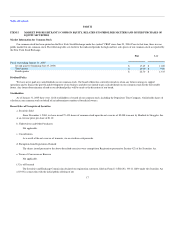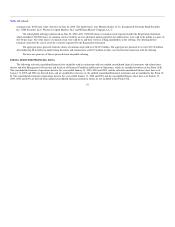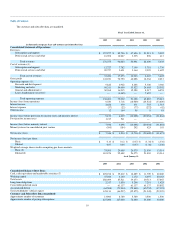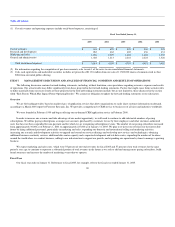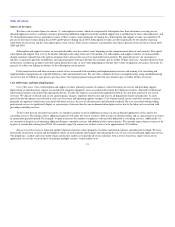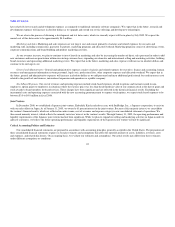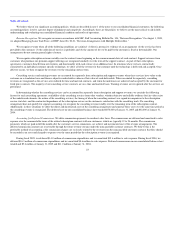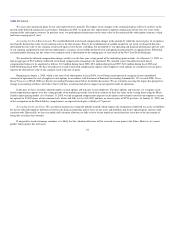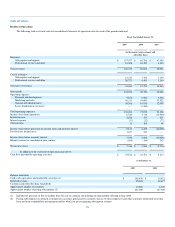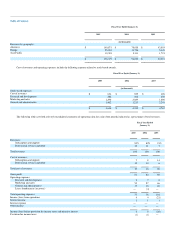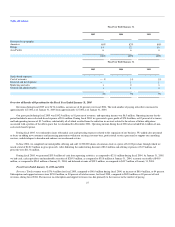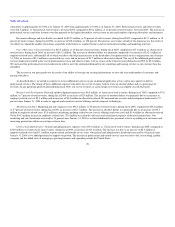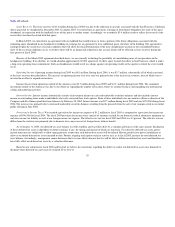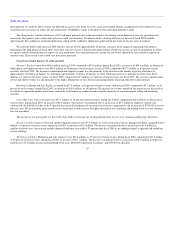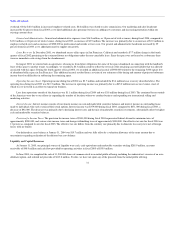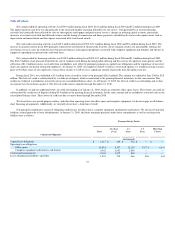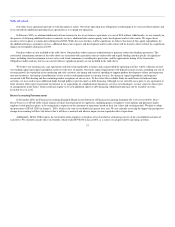Salesforce.com 2004 Annual Report Download - page 27
Download and view the complete annual report
Please find page 27 of the 2004 Salesforce.com annual report below. You can navigate through the pages in the report by either clicking on the pages listed below, or by using the keyword search tool below to find specific information within the annual report.
Table of Contents
We assess the commission plans for our sales representatives annually. The impact of any changes to the commission plans will have an effect on the
growth of the deferred commission asset balance. During fiscal 2005, we paid our sales representatives upfront commissions for the first two years of the
noncancelable subscription contracts. In previous years, we paid upfront commissions on the entire value of the noncancelable subscription contracts, which
had terms ranging up to 5 years.
Accounting for Stock-Based Awards. We recorded deferred stock-based compensation charges in the amount by which the exercise price of an option is
less than the deemed fair value of our common stock at the date of grant. Prior to the establishment of a public market for our stock, our board of directors
determined the fair value of our common stock based upon several factors, including, but not limited to, our operating and financial performance, private sales
of our common and preferred stock between third parties, issuances of convertible preferred stock and appraisals performed by an appraisal firm. Following
our initial public offering, the fair value of our common stock is determined by the trading price of such stock on the New York Stock Exchange.
We amortize the deferred compensation charges ratably over the four-year vesting period of the underlying option awards. As of January 31, 2005, we
had an aggregate of $5.9 million of deferred stock-based compensation remaining to be amortized. We currently expect this deferred stock-based
compensation balance to be amortized as follows: $3.0 million during fiscal 2006; $2.0 million during fiscal 2007; $0.8 million during fiscal 2008 and
$100,000 during fiscal 2009. We have elected not to record stock-based compensation expense when employee stock options are awarded at exercise prices
equal to the deemed fair value of our common stock at the date of grant.
Beginning on August 1, 2005, which is the start of our third quarter in fiscal 2006, we will begin to prospectively recognize in our consolidated
statement of operations the cost of employee stock options in accordance with Statement of Financial Accounting Standards No. 123 (revised 2004), Share-
Based Payment, or SFAS 123R (see Recent Accounting Pronouncement below for further discussion). We are currently assessing the impact this prospective
change in accounting will have, but believe that it will have a material and adverse impact on our reported results of operations.
In the past, we have awarded a limited number of stock options and warrants to non-employees. For these options and warrants, we recognize stock-
based compensation expense over the vesting periods of the underlying awards, based on an estimate of their fair value on the vesting dates using the Black-
Scholes option-pricing model. As of January 31, 2005, we had recognized compensation expense on all options and warrants issued to non-employees except
for options for 50,000 shares of our common stock, which will fully vest by July 2007 and have an exercise price of $2.50 per share. At January 31, 2005, one
of the assumptions in the Black-Scholes computation is an expected stock price volatility of 75 percent.
Accounting for Income Taxes. We account for income taxes using the liability method, which requires the recognition of deferred tax assets or liabilities
for the tax-effected temporary differences between the financial reporting and tax bases of our assets and liabilities and for net operating loss and tax credit
carryforwards. Historically, we have recorded a full valuation allowance to fully reserve for the benefit of our deferred tax assets due to the uncertainty of
being able to realize these benefits.
If our positive trend of earnings continues, it is likely that the valuation allowance will be reversed at some point in the future. However, we cannot
predict which quarter this will occur.
24


